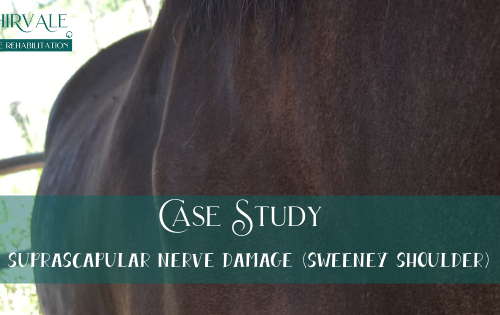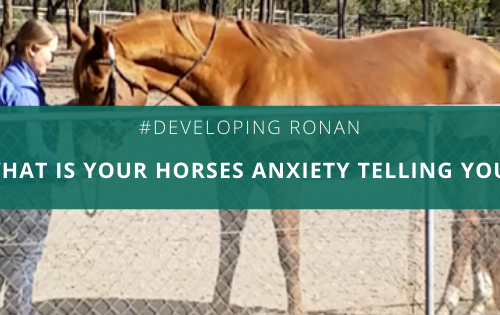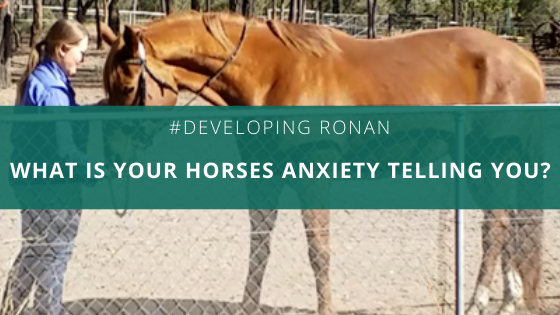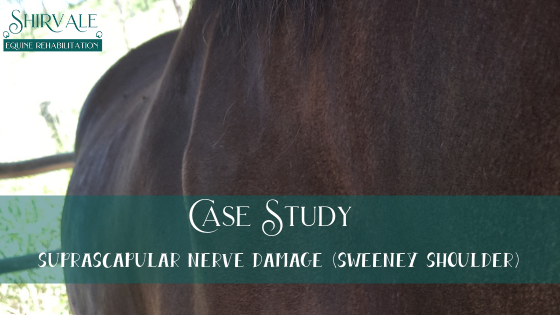Uncategorized
-
Forms
-
What is your horses anxiety telling you?
Working with Ronan today gave me a lot to think about. It was our first in hand work session since his fall 4 weeks ago (which later diagnostics led us to discover his was born with a slight “step down” of C5/6 causing mild spinal cord compression). He was straight away unsettled, curling behind the bit, collapsing through his thoracic sling and over-reacting to every single aid I gave. Now, once upon a time, I would have just become firmer with him and told him to get over it and “pay attention to me”. Instead, I took a few deep breaths, and just tuned into him, to be guided to…
-
Case Study – Sweeney Shoulder
5yo gelding Veterinary Diagnosis Trauma to the suprascapular nerve aka “Sweeney Shoulder” Presented with 5/5 lameness right fore, with subluxation of his right shoulder joint occurring. What is Sweeney Shoulder? When trauma occurs to the suprascapular nerve, innervation to the infraspinatus and supraspinatus muscles of the shoulder becomes compromised. Due to the compromised innervation, these two muscles begin to atrophy – this atrophy is what is commonly termed “Sweeney Shoulder”. The supraspinatus muscle provides lateral support to the shoulder joint as well as playing a role in shoulder joint extension. The infraspinastus muscle acts like a lateral collateral ligament to the shoulder joint as well assisting in shoulder joint flexion.…
-
Indemnity Form
For coaching clients, please complete the below form and email through or have for Jacinda at your first lesson. Indemnity Form
-
Soft tissue and wound repair process
Bleeding Phase (4-6hrs) – Bleeding occurs directly after the injury/trauma occurs. The amount of bleeding is dependent on the area of injury (if it is an area that is highly vascular or not e.g. muscle injuries will have more bleeding than ligament injuries). Bleeding typically stops approximately 4 to 6 hours after the time of injury. Inflammatory Phase (6hrs to 3 days) – Two major responses occur during this phase: a vascular response and cellular response. The vascular response stimulates vasodilation and vasopermeability. The cellular response involves the emigration of phagocytes, monocytes (which become macrophages), lymphocytes, esoinophils and basophils this combined with a chemical response ensures that tissue debridement, fibrin…
-
Sharon May Davis Equine Therapy Masterclass – Brisbane 9th & 10th of July 2016
This exciting event is very much geared towards the hands-on bodywork practitioner who is using their skills regularly, either on clients’ horses or on a wide range of their own and friends’ horses. Through case study and lecture room learning, we will be looking at commonly identified issues, as well as the more unusual cases that are presented by the horses. This is a chance to learn how a bodyworker of Sharon’s standing and experience approaches some of the problems we all see, while also benefiting from her considerable knowledge of equine anatomy and pathologies. Instruction will include her approach stretching and traction – the traction in particular is…
-
Horse History & Client Record Form
This form is to be completed prior to your horses first appointment with Jacinda. Please complete and email to equine.p.r.s@gmail.com or have printed, ready to hand over at the time of your appointment. Thanks, Jacinda Horse History & Client Record Form 2016
-
How to prepare your horse for an Equine Musculoskeletal Therapy Session
After booking an appointment with Jacinda for the first time she will email you a ‘Horse History’ form, please complete this and email back prior to the booked session or hand over to Jacinda in person at the time of your appointment. Ensure your horse is as clean & dry as possible with any mud, dirt and other debris removed & hooves picked out. Why is this important? If your horse has a wet coat, or a lot of dirt caught in their coat, the action of massage, trigger point therapy and other manual therapy techniques can aggravate the skin causing a burning sensation. Please ensure that your horse has…
-
A belated New Years Post
Wow, what a year 2015 was! For me it was the year for learning, completing numerous courses that have shaped the practitioner I have now become in ways I never thought possible. I finally ‘connected’ the dots between the ‘scientific’ side of assessment and body work, with honing my ability to feel and let the tissue take me on a ‘journey’ to the root cause, allowing the possibility for re-tensioning and responses that I never thought possible. Thank you to all my clients for all your support during 2015, I look forward to working with you all this year to develop happy, healthy horses J 2016 is shaping up to…
-
EPRS going to the Festival of Dressage!
.. More details to follow.



